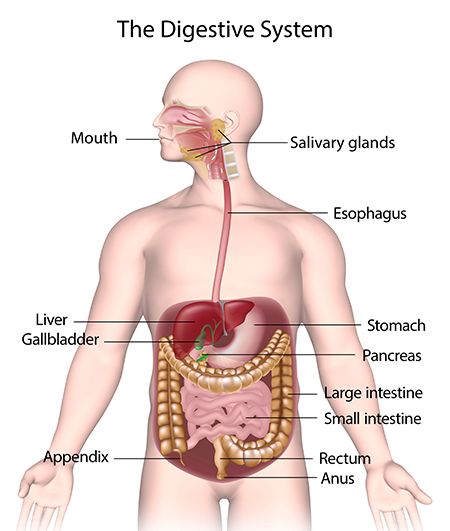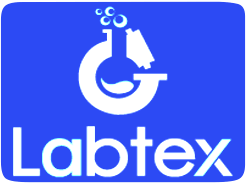- Water Testing Meters
- Anemometer
- Length & Distance Meter
- Multimeter & Clamp Meter
- Light and Sound Meter
- Slide Calipers & Screw Gauge
- Thermometer & Hygrometer
- Milk Testing Meters
- Paper, Grain & Wood Testers
- Stopwatch & Timers
- Soil Testing Meters
- Refractometers & Analyzer
- Magnetic Compass
- Tachometer & Megger
- Thickness & Dia-Meters
- Other Meter And Accessories
Human Digestive System and its Functions

A human digestive system is a group of organs or parts of organs. The primary goal of the digestive system is to break down large food molecules into smaller ones. The human body easily absorbs these small molecules. We derive energy from the food we consume to carry out our daily activities. Also, the food we eat helps in the growth, repair, and maintenance of the body.
Cells in the human body use biomolecules and enzymes and, therefore, run the respiratory chain. All these biomolecules and enzymes are derived from the food we consume. How is the food we eat made available to every cell in the body? This is only possible with the help of our digestive system, through which food is digested and absorbed in our body.

Let’s go to discuss the important functions of the human digestive system:
Part of the Human Digestive System
We voluntarily put food in our mouth, chew, and chewed food mixed with saliva (also known as a bolus) enters the esophagus. We may stop eating after a while, but the digestion process continues for hours until the waste is eliminated.

The human digestive system, also known as the gastrointestinal tract, consists of the alimentary canal and associated glands. The esophagus begins at the mouth. An anterior opening of the mouth leads to the buccal cavity. The teeth and tongue are located in the oral cavity. The pharynx is next to the oral cavity.
The pharynx has an opening for the esophagus and trachea (windpipe). The gastro-oesophageal sphincter is present at the opening of the esophagus into the stomach. The stomach is divided into three parts; The upper cardiac (where the esophagus opens), the middle fundus, and the lower pyloric region. It is the pyloric segment of the stomach that leads to the duodenum; A pyloric sphincter controls the opening of the stomach into the duodenum.
The small intestine is also divided into three parts. The duodenum represents the first part of the small intestine. The middle coiled portion of the small intestine is the jejunum and the extremely coiled portion is the ileum. The large intestine opens into the ileum. The large intestine is also divided into three parts, namely, the cecum, colon, and rectum.
The first part of the large intestine, the cecum, leads to the colon; Which is further divided into ascending, oblique, and descending parts. The descending part of the colon extends into the anus. The anus leads to the anus.
Functions of the Human Digestive System

Since in the above discussion, we have got a brief description of the parts of the human digestive system, now we will talk about the functions of the digestive system.
The human digestive system not only facilitates the digestion of food but also its assimilation and elimination.
Digestion is a process in which complex substances are easily converted, which are easily absorbed. Various chemical and mechanical processes help in the very process of digestion. As soon as the food is put into the mouth, mechanical processes begin. Since chewing is a physical process, it is referred to as a mechanical process.
Chemical digestion also begins when food is in your mouth. In the mouth, food is mixed with saliva; which contains salivary enzymes. These salivary enzymes begin to break down the food molecules. When food reaches your stomach, chemical processes begin. Food, now, begins to mix with various digestive juices.
- Saliva helps in the proper mixing of food particles and mastication. Food mixed with saliva is called a bolus. Saliva contains electrolytes, Na+, K+, Cl- and HCO3-, salivary enzymes, salivary lipase, and lysozyme.
Salivary amylase breaks down starch molecules. Salivary amylase present in the saliva is also called betalain. Starch breaks down into maltose and dextrin. Further digestion occurs in the small intestine. About 30 percent of starch is digested in the oral cavity.
Starch + salivary amylase → maltose
- Salivary lipase helps in fat digestion. Salivary lipase plays an important role in children; Because pancreatic lipase is not yet developed in children.
- Salivary lysozyme acts as an antibacterial agent; Hence, it prevents infection.
- Electrolytes/ions maintain the acidity of the oral cavity within a pH range of 6.2-7.4; As the ions present in saliva act as effective buffers.
- The bolus passes through the esophagus into the stomach. The bolus is pushed through the intestine by alternating waves of muscle contractions called peristalsis.
- When food reaches the stomach, it stores for about 4 to 5 hours. Gastric glands in the stomach secrete mucus, the proenzyme pepsinogen, HCl, and intrinsic factor. Acidic gastric juice, which is secreted by the gastric gland, mixes completely with the food. Mixing occurs with the churning movement of the stomach and the food now called chyme.
- HCl creates an acidic environment for food digestion. Pepsin enzymes require an acidic environment for efficient functioning. The proenzyme, pepsinogen, is converted into the active form, pepsin, after the action of hydrochloric acid (HCl).
- Once pepsin is activated, it begins to digest proteins; and converts proteins into peptones and proteases.
- Mucus and bicarbonates secreted by the gastric glands protect the stomach lining from the highly acidic HCl.
- The intrinsic factor is important for vitamin B12 absorption.
- Another proenzyme, prorenin, is secreted in infants. The proenzyme is converted to an active form, renin, also by the action of HCl. Renin is responsible for the conversion of casein into peptides.
- In addition to the above gastric enzymes, gastric lipases are also secreted by the gastric gland in small amounts.
- Now, the chyme reaches the small intestine. Chyme moves through the small intestine only through the process of peristalsis. Partially digested food, chyme, is further mixed and churned in the small intestine. Enzymes/juices secreted by the pancreas and liver are also secreted into the small intestine. Therefore, intestinal juice also contains pancreatic enzymes, bile juice, and mucus. Intestinal juices contain disaccharides (eg, maltase), dipeptidases, lipases, nucleosidases, etc. Pancreatic juice contains proenzymes- trypsinogen, chymotrypsinogen, procarboxypeptidases, amylases, lipases, and nucleases. Bile carries bile pigments (bilirubin and biliverdin), bile salts, cholesterol, and phospholipids. However, bile contains no enzymes.
Intestinal juice is also known as succus entericus.
The enzyme enterokinase, which is secreted by the small intestine, activates trypsin into trypsin. The active form, trypsin, further activates other proenzymes present in pancreatic juice.
- Bile helps break down fat into smaller molecules called micelles. This process is known as fat emulsification. Lipases present in an inactive form in intestinal juice are also activated by bile.
- Since all of these enzymes are optimal in an alkaline medium, bicarbonate as well as mucus help create an alkaline environment.
- Partially digested proteins are further broken down into dipeptides by the action of pancreatic enzymes.
- Carbohydrates and nucleic acids are hydrolyzed into smaller compounds by pancreatic enzymes; On the other hand, bile helps break down fat.
- Once the biomacromolecules are broken down in the small intestine and absorbed by the blood, the undigested/unabsorbed compounds/food particles reach the large intestine. Food is not digested in the large intestine. However, it carries some important functions;
- Leftover/undigested food is acted upon by bacteria in the large intestine.
- The main function of the large intestine is to absorb water, electrolytes, minerals, and some drugs.
- Also, mucus, which is secreted by the large intestine, adheres undigested/absorbed/waste particles together. Apart from this, it helps in lubrication; For easy passage of waste.
- Undigested food, now, known as feces. It passes through the caecum into the anus; where it is temporarily stored until ization.
Exploitation
When digestion is complete, the next process that occurs is absorption. It is only through the process of absorption that broken-down compounds enter the bloodstream. Common nutrient molecules travel from the gastrointestinal tract to the blood or lymph vessels. The following processes carry out the absorption process:
- Active Transport,
- Passive transport, and
- Transportation facilities
Let us discuss how the absorption of various biomolecules into the bloodstream occurs:
- Glucose, amino acids, and some electrolytes—by simple diffusion
- Glucose and amino acids- by facilitative transport
- Amino acids, monosaccharides (such as glucose), and electrolytes (Na+)- by active transport
- Fatty acids and glycerol- are absorbed in chylomicron form.

